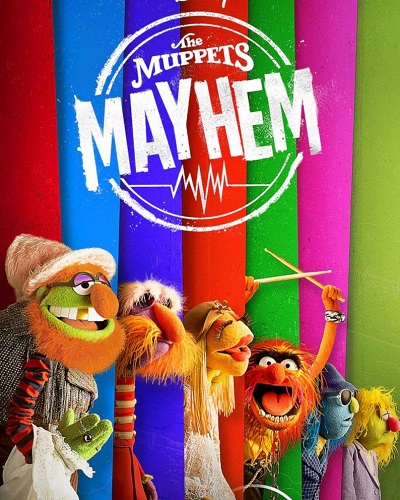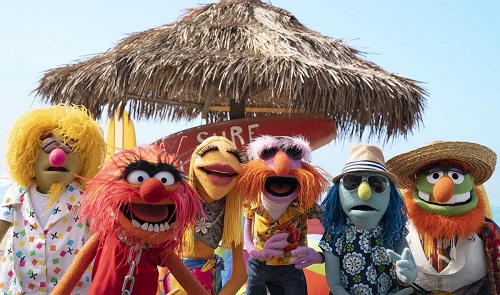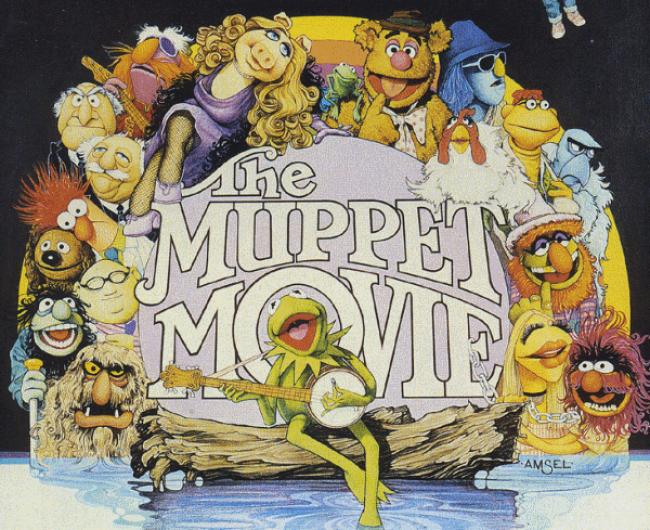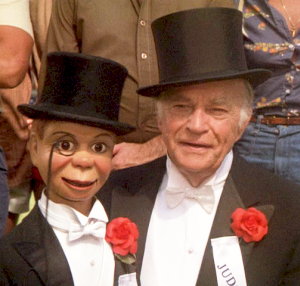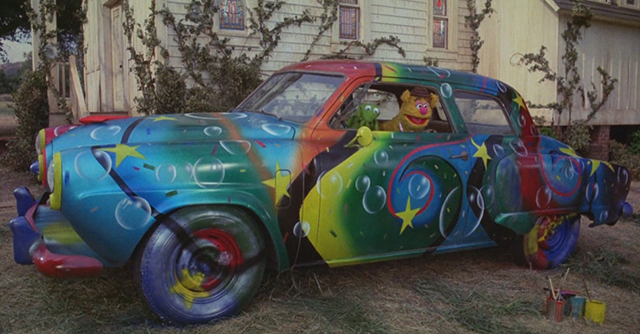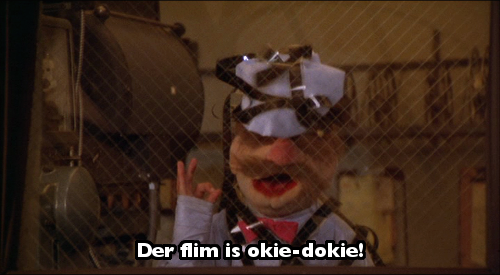Introduction
The following is a research paper that I wrote for one of my college classes in November of 2010. Eight years later, it still remains one of my favorite writings. If you have ever wondered about why music is SO important in school – please read on.
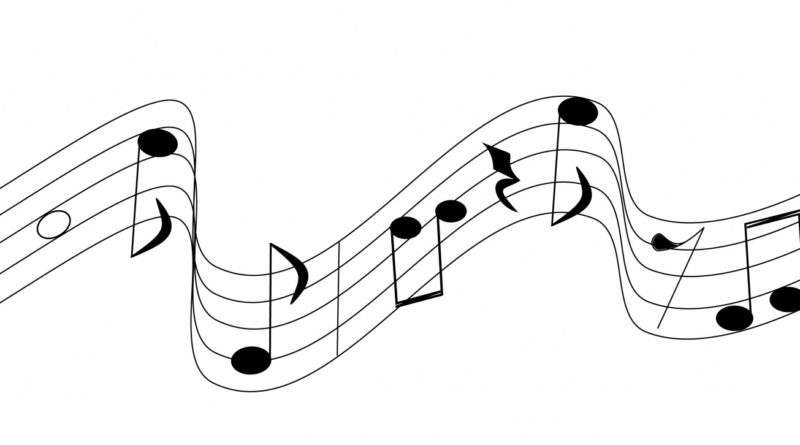
The Benefits of Music Education (2010)
In 1988, my high school band director told our class about an international concert. For one month, high school students from all over the world rehearsed the same three pieces of music. At the end of that month, they all came together in one place and performed those three pieces flawlessly in front of an audience with no rehearsal. The point of his story was to show that in music – there are no language barriers. Hans Christian Anderson said, “Where words fail, music speaks.” Yes, music speaks, but it does so much more. For the purpose of this paper, I’d like to examine the benefits of music education in school and how they prepare students for life.
Think for a moment about how music can affect us. An up-tempo march played by a marching band in a parade can bring happiness, while a song about a lost love can bring sadness and tears. Some modern rock music is an expression of the composer’s anger, while smooth jazz is the expression of its composer’s “coolness”. What would a movie be without the soundtrack or orchestral underscore? It is hard for me to imagine a horror movie without suspenseful music that builds you up to that moment of sudden shock! Music stimulates and enhances our emotions.
Music can also help a person think more clearly. Did you know that music helped Thomas Jefferson write the Declaration of Independence? “When he could not figure out the right wording for a certain part, he would play his violin to help him. The music helped him get the words from his brain onto paper” (O’Donnell, 1999). One of the world’s smartest men and greatest thinkers also used music to help him think. Albert Einstein said that the reason he was so smart was because he, too, played the violin. “A friend of Einstein, G.J. Withrow, said that the way Einstein figured out his problems and equations was by improvising on the violin” (O’Donnell, 1999).
There is plenty of research that implies that children have an incredible capacity to learn from the day that they are born. Music and melody can play a key role in helping a child learn. A prime example of this would be the “Alphabet Song”. Set to the tune of “Twinkle, Twinkle, Little Star”, countless children are able to learn their ABC’s by singing them to this familiar tune. Educational television shows like “Sesame Street” have been using music to teach not only numbers and letters to children, but also the concepts of sharing, colors, and good manners. Music and learning seem to work quite well together.
Why then, is music education one of the first things that are cut in public schools when a school district is trying to save money? I, personally, do not have an answer to that question, but former Arkansas Governor Mike Huckabee had this to say about it:
“When I hear people asking how we fix the education system, I tell them we need to do the opposite of what is happening, cutting budgets by cutting music programs. Nothing could be stupider than removing the ability for left and right brains to function. Ask a CEO what they are looking for in an employee and they say they need people who understand teamwork, people who are disciplined, people who understand the big picture. You know what they need? They need musicians.” (Huckabee, as cited in “The Benefits of the Study of Music”, n.d.)
What I hope to present to the reader in the next few pages, is enough information to prove that there are many benefits to music education in school. Let us examine those benefits and how they remain with students long after graduation and help them through life.
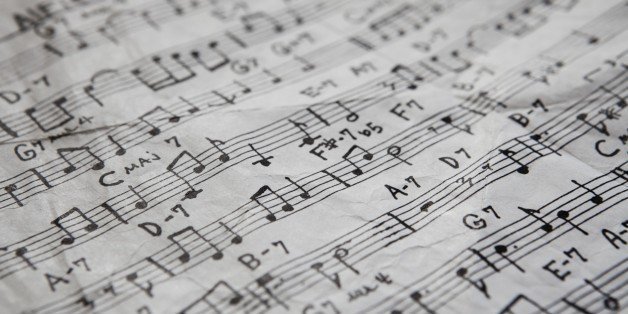
Music and Life
Consider the words of General Norman Schwartzkopf, who led the coalition forces that defeated Iraq and liberated Kuwait in Operation Desert Storm: “During the Gulf War, the few opportunities I had for relaxation I always listened to music and it brought me great peace of mind”. He adds that his love for music started “with the music appreciation course that I was taught in a third-grade elementary class. What a tragedy it would be if we lived in a world where music was not taught to children” (Schwartzkopf, as cited in “Music Advocacy’s Top Ten Quotes”, 2006). Jim Henson, creator of “The Muppet Show” says, “Music is an essential part of everything we do. Like puppetry, music has an abstract quality which speaks to a worldwide audience in a wonderful way that nourishes the soul” (Henson, as cited in “Music Advocacy’s Top Ten Quotes”, 2006). Finally, singer, songwriter, Jewel, says, “Some people think music education is a privilege, but I think it is essential to being human” (Jewel, as cited in “Music Advocacy’s Top Ten Quotes”, 2006). It is indeed.
As children grow, they have a natural desire to sing and play with the only goal being their own enjoyment. Studies have shown a connection between music and play and brain development. In her book, “Music and the Young Mind”, Maureen Harris says that research “clearly demonstrates that the first years in a child’s life constitute an extremely important time when music can stimulate the development of nerve connections among brain cells for optimal cognitive development” (Harris, 2009). A 1997 study by Whitwell found that simply discussing music uses the left side of the brain, while making music uses the right side (Harris, 2009). Activities like playing a musical instrument or singing, which engage both sides of the brain at the same time, cause the brain to be more capable of processing information (O’Donnell, 1999).
Brain plasticity is the brain’s unique ability to constantly change, grow, and basically remap itself over the course of a lifetime. Dr. Frederick Tims says, “Just as music involves all aspects of learning (memory, recognition, emotion, motor control and perception), music education can work to stimulate brain nerve resources that might otherwise be left untapped” (Tims, as cited in “The Benefits of the Study of Music”, n.d.). According to German professor Eckhardt Altenmüller, music making “turns out to be the behavior which probably most effectively induces short-term and long-term brain plasticity” (Altenmüller, n.d.). He adds that in professional pianists and violinists, who started their training before 7 years of age, “the anterior portion of the corpus callosum – the most important interhemispheric connection – is larger compared to non-musicians or to musicians with later onset of practice” (Altenmüller, n.d.).
As little as one year of music training can have a positive impact on your brain that will last the rest of your life (Hawkins, 2009). Tom Shaner, retired band director for Van Dyke Public Schools in Warren, MI told me “Research now supports the theory that we (music teachers) have felt for many years – that the study of music is helpful in brain development. Observation over many years of teaching gave us support of that theory” (Shaner, personal communication, October 2010). Altenmüller admits that research on the effects of music education on the brain is still in the infancy stages. He elaborates, “I suspect that we have not yet found the right tests or done the necessary studies for demonstrating the long term impact of music education for daily life in reasoning and feeling” (Altenmüller, n.d.). This, however, does not mean that there is a shortage of research to show positive benefits of music education, as we will see.
Music and Intelligence
Let us consider how the study of music helps students develop intelligence. According to a 2007 article in Nature Neuroscience, “playing a musical instrument significantly enhances the brainstem’s sensitivity to speech sounds. This relates to encoding skills involved with music and language. Experience with music at a young age can ‘fine-tune’ the brain’s auditory system” (“The Benefits of the Study of Music”, n.d.). In his book “A User’s Guide to the Brain”, Dr. John Ratley says:
“The musician is constantly adjusting decisions on tempo, tone, style, rhythm, phrasing, and feeling – training the brain to become incredibly good at organizing and conducting numerous activities at once. Dedicated practice of this orchestration can have a great payoff for lifetime attentional skills, intelligence, and an ability for self-knowledge and expression.” (Ratley, as cited in “the benefits of the Study of Music”, n.d.)
Spatial reasoning is the ability to interpret and make drawings, form mental images, and visualize movement or change in those images. Spatial reasoning is especially important in mathematics. “A University of California (Irving) study showed that after eight months of keyboard lessons, preschoolers showed a 46% boost in their spatial reasoning IQ” (Rauscher, Shaw, Levine, Ky, and Wright, as cited in “The Benefits of the Study of Music”, n.d.).
We have seen the effects of music education on the brain and how it factors in developing intelligence. It is interesting to note that according to a 1996 Harris poll, schools that have music programs have significantly higher graduation rates than those without programs (90.2% as compared to 72.9%). Let us continue to move forward and see the benefits of music education on learning in school and specific subjects.
Music and Learning
In the Journal of Research in Music Education, Christopher Johnson and Jenny Memmott found that students in high-quality music programs score higher on standardized tests compared to students in schools with deficient music education programs. “Students in top-quality music programs scored 22% better in English and 20% better in math than students in deficient music programs” (Johnson & Memmont, as cited in The Benefits of the Study of Music”, n.d.). A 1996 Nature magazine article states that “the scores of elementary instrumental music students on standardized math tests increased with each year they participated in the instrumental music program” (Music Advocacy for Directors, 2000). According to the California Council of the Fine Arts Deans, research shows when the arts are included in a student’s curriculum, reading, writing, and math scores improve. A 1999 article in Neurological Research magazine showed that second and third grade students who were taught fractions through musical rhythms scored 100% higher on fractions tests than those who learned in the conventional manner. It should not be surprising that those students who study the arts wind up having more success on tests like the SAT and achieve higher grades in high school.
Music education also has an influence on a student’s behavior. In “Arts With the Brain in Mind”, Eric Jensen shows that “with music in schools, students connect to each other better” and that there is “greater camaraderie, fewer fights, less racism, and reduced use of harmful sarcasm” (Jensen, as cited in “Music Education Statistics and Facts, n.d.). A 2003 Gallup Poll showed that 71% of Americans believed that teenagers who play a musical instrument were less likely to have disciplinary problems. (“Music Education Statistics and Facts, n.d.). Music students also demonstrate less test anxiety and performance anxiety than those students who do not study music.
Music Prepares for Life
So just how does music education prepare students for life “after school”? What benefits from having been a part of music education do students take with them into “real life”? Dr. Tim Lautzenheiser, President of “Attitude Concepts for Today”, says that there are many “indirect” benefits of music education. He claims that there is more to making music than just the rewards that are experienced while in school. He says, “Being a musician maps the human mind for success; success in all avenues of life” (Lautzenheiser, personal communication, October 2010).
Dr. Tim, as he is affectionately known to band directors and students all across the country, presented me with five key things that are learned through music that apply to personal and professional challenges that students will face after graduating from school. First, he says, “Through music learning we teach an understanding of quality as well as the rewards of quantity” (October 2010). In other words, a student will experience facts and figures involved with making music, but also will gain an appreciation for the arts. Unlike standard tests, in which the final evaluation is the reward, a music student gains their reward as a result of making the music.
Second, Lautzenheiser says, students learn “behavior based on ethics as well as the importance of obeying the rules” (October 2010). In the music setting, each musician needs to be ethical and follow certain rules and regulations. They execute self-discipline in order to contribute and achieve the goal of the group. Lautzenheiser says that music education programs are “shaping the lives of our ‘leaders of tomorrow’” because of the habits and discipline formed in the rehearsal setting (October 2010).
Third, Dr. Tim says that music education teaches “respect for authority as opposed to fear of domination” (October 2010). Members of a band must learn to execute the instructions of the band director. Band members do not have time to discuss or argue with the choices of the band director, they trust his or her decisions and follow them. They must trust that those instructions are what is best for the group as a whole. Dr. Tim says that “domination discourages creative thinking”, while authority encourages it. This also helps individuals to learn the importance of cooperation.
The fourth thing that a music program teaches students according to Lautzenheiser, is “a working wisdom as well as a solid transcript of achievement” (October 2010). What is achievement? It is a measurable set of discipline and guidelines. What is wisdom? It is learning that will support a positive and purposeful lifestyle. Dr. Tim elaborates that music “makes better human beings and makes human beings better” (October 2010).
Finally, Lautzenheiser says that music education teaches students “an ongoing development of inner peace as well as a workable plan for personal security” (October 2010). Music is deeply rooted in emotion. Music is thought to link all of the emotional, spiritual, and physical elements of the universe (O’Donnell, 1999). The criteria for personal happiness are determined solely by each individual. Nobody can tell someone what brings them pleasure or joy. Music education is a way for students to express their inner thoughts or feelings through music. It encourages creative expression, which is a foundational component of self-satisfaction. With band, Lautzenheiser says, “The music is the reason, the music is the reward, the music is the substance, and the music is the payoff” (October 2010).
We are encouraged throughout out life to be creative. Music education and music in general, plays a key role to a person’s creativity. Tom Shaner says it this way, “The study of music develops an understanding, participation in, and enjoyment of the creative side of the human mind and existence. This happens through active music making, listening and recreational enjoyment” (October 2010).
To further illustrate how music education prepares students for life, I must reference the Children’s Music Workshop. They list numerous benefits of music education on their website. For example, “students of the arts learn to think creatively and to solve problems by imagining various solutions, rejecting outdated rules and assumptions” (Twelve Benefits of Music Education, n.d.). “Music study develops skills that are necessary in the workplace. It focuses on ‘doing’ as opposed to observing, and teaches students how to perform, literally anywhere in the world” (Twelve Benefits of Music Education, n.d.). Ask any employer and they will tell you that they are looking for workers who are well rounded individuals who are flexible. Music education produces people who fit that description. “Music study enhances teamwork skills and discipline” (Twelve Benefits of Music Education, n.d.). Those skills and disciplines are taught in the rehearsal setting each and every day. Gregory Anrig, president of Educational Testing Service says, “The things I learned from my experience in music in school are discipline, perseverance, dependability, composure, courage and pride in results. Not a bad preparation for the workforce!” (Anrig, as cited in “Music Benefits Children in Important and Substantial Ways”, n.d.).
It is “through music study, students learn the value of sustained effort to achieve excellence and the concrete rewards of hard work” (Twelve Benefits of Music Education, n.d.). When a mistake is made in a performance, there is no way to stop and correct it. It is a mistake and the show must go on. A student either plays the notes well, or they do not. If an entrance is missed, it is missed. Hard work is the only thing that makes a successful performance possible. It is through diligent practice and determination that a student can achieve excellence.
Students who study the arts learn empathy. They get a look at other cultures and learn to be empathetic to them. “This development of compassion and empathy, as opposed to development of greed and a ‘me first’ attitude, provides a bridge across cultural chasms that leads to respect of other races at an early age” (Twelve Benefits of Music Education, n.d.). Empathy is one of life’s important lessons. It is a rare find in society today. Society seems to teach that we should only care about ourselves, but students who learn empathy can identify and understand the feelings of others. Imagine how different the world would be if everyone showed empathy!
Closing Thoughts
Students who participate in a music education program reap many benefits from it. They think better. They solve problems more easily. They have higher scores than those students who do not participate in a music program. They are better prepared for life after school. One study even shows that they live longer and healthier lives (Tims, as cited in “The Benefits of the Study of Music”, n.d.). With all of the information I have presented, it should come as no surprise that I am such an advocate for music education in schools. We are often told that our children are our future. With that in mind, I will close with a quote from former President of the United States, Gerald Ford, who said that music education “opens doors that help children pass from school into the world around them – a world of work, culture, intellectual activity, and human involvement. The future of our nation depends on providing our children with a complete education that includes music” (Ford, as cited in “Music Advocacy’s Top Ten Quotes”, 2006).
Thanks for reading!
Music Quotes I Love!
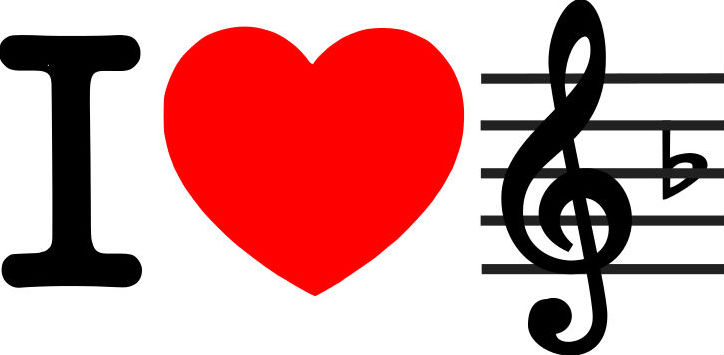
“Without music, life would be a mistake” ― Friedrich Nietzsche.
“How is it that music can, without words, evoke our laughter, our fears, our highest aspirations?” ― Jane Swan
“If I were not a physicist, I would probably be a musician. I often think in music. I live my daydreams in music. I see my life in terms of music.” – Albert Einstein
I think music in itself is healing. It’s an explosive expression of humanity. It’s something we are all touched by. No matter what culture we’re from, everyone loves music.” ― Billy Joel
“Music is to the soul what words are to the mind.” ― Modest Mouse
“Music touches us emotionally, where words alone can’t.” ― Johnny Depp
“Music . . . can name the unnameable and communicate the unknowable.” ― Leonard Bernstein
“Music can change the world because it can change people.” ― Bono
“Music… will help dissolve your perplexities and purify your character and sensibilities, and in time of care and sorrow, will keep a fountain of joy alive in you.” ― Dietrich Bonhoeffer
“Music is the great uniter. An incredible force. Something that people who differ on everything and anything else can have in common.” ― Sarah Dessen
“Life seems to go on without effort when I am filled with music.” ― George Eliot
“To live is to be musical, starting with the blood dancing in your veins. Everything living has a rhythm. Do you feel your music?” ― Michael Jackson
“Love is friendship set to music.” ― Jackson Pollock
“This will be our reply to violence: to make music more intensely, more beautifully, more devotedly than ever before.” ― Leonard Bernstein
“Music is the wine that fills the cup of silence” – Robert Fripp
